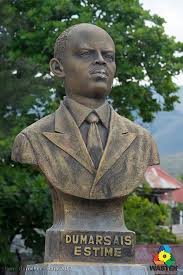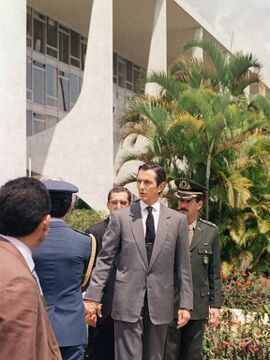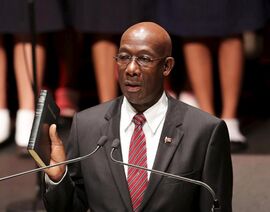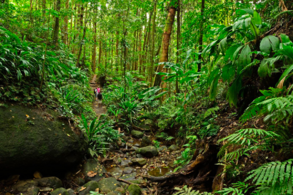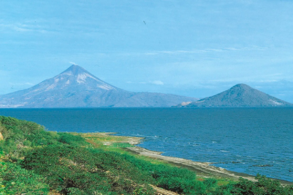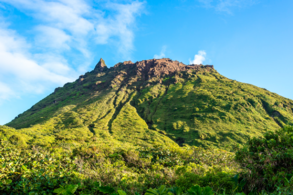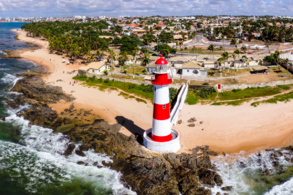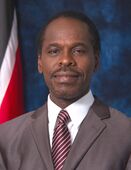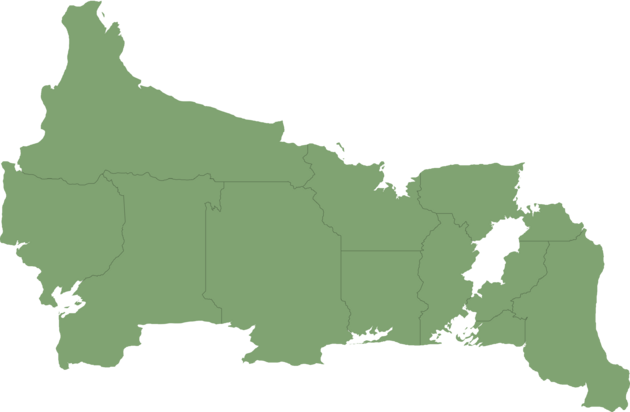Bonaventura: Difference between revisions
| Line 156: | Line 156: | ||
===Independence and Modern Era=== | ===Independence and Modern Era=== | ||
[[image:QuartoBVmorte.jpeg|thumb| | [[image:QuartoBVmorte.jpeg|thumb|300px|right|Funeral of President Quarto Bonaventure, 1956]] | ||
Following Voloix's resignation, [[Narciso Mastrogiacomo]], former [[United Provinces (Kylaris)#List of Prime Ministers of the United Provinces|United Provinces Premier]], took over the presidential chair and led the constitutional reform that would be eventually approved by the [[National Assembly of Bonaventure|National Assembly]] on February 3rd, 1956. The main changes following the new constitution were the change of the official name of the country from the "United Provinces of the Golden Isles" into the "Bonaventurean Federation", as well as the adoption of new [[Symbols of Bonaventure|national symbols]], and the reorganization of its [[Bonaventure#Sub-divisions|administrative divisions]] into {{wp|federative states}} as opposed to unitary {{wpl|province|provinces}}. The new constitution also set direct elections every four years, with the first ever being held on October 14, 1956. By the end national presidential election in the history of Bonaventure, [[Quarto Bonaventura]] was elected as the first democratic President of the nation. Unfortunately, President Bonaventura suffered from a severe brain tumor that led to a fatal stroke only one month after taking over the presidency. By protocol, [[Giancarlo Riga]], then Bonaventura's Vice President, ruled the nation until the end of his mandate on October 13th, 1960. While the opposition put up a good fight in the 1960 election, Riga was elected as the second President of Bonaventure, following his good job for the past three years. By the 1964 presidential election, Bonaventure, alongside all of the other Arucian nations, plumbed down in an economic crisis resulting from the 1964 [[Sugar Crash]]. The newly reelected President Riga suffered tremendously to keep the national economy steady during the crisis, and his approval index fell exponentially. | Following Voloix's resignation, [[Narciso Mastrogiacomo]], former [[United Provinces (Kylaris)#List of Prime Ministers of the United Provinces|United Provinces Premier]], took over the presidential chair and led the constitutional reform that would be eventually approved by the [[National Assembly of Bonaventure|National Assembly]] on February 3rd, 1956. The main changes following the new constitution were the change of the official name of the country from the "United Provinces of the Golden Isles" into the "Bonaventurean Federation", as well as the adoption of new [[Symbols of Bonaventure|national symbols]], and the reorganization of its [[Bonaventure#Sub-divisions|administrative divisions]] into {{wp|federative states}} as opposed to unitary {{wpl|province|provinces}}. The new constitution also set direct elections every four years, with the first ever being held on October 14, 1956. By the end national presidential election in the history of Bonaventure, [[Quarto Bonaventura]] was elected as the first democratic President of the nation. Unfortunately, President Bonaventura suffered from a severe brain tumor that led to a fatal stroke only one month after taking over the presidency. By protocol, [[Giancarlo Riga]], then Bonaventura's Vice President, ruled the nation until the end of his mandate on October 13th, 1960. While the opposition put up a good fight in the 1960 election, Riga was elected as the second President of Bonaventure, following his good job for the past three years. By the 1964 presidential election, Bonaventure, alongside all of the other Arucian nations, plumbed down in an economic crisis resulting from the 1964 [[Sugar Crash]]. The newly reelected President Riga suffered tremendously to keep the national economy steady during the crisis, and his approval index fell exponentially. | ||
[[image:ImpeachmentCollorbutBVinstead.jpeg|thumb|270px|left|President Ponziano Mione being scorted by the federal police following his impeachment, 1994.]] | [[image:ImpeachmentCollorbutBVinstead.jpeg|thumb|270px|left|President Ponziano Mione being scorted by the federal police following his impeachment, 1994.]] | ||
Revision as of 07:33, 27 August 2022
Bonaventurean Federation Vespasian: Federazione Bonaventurana | |
|---|---|
| Motto: "Negare e triunfare" (Estmerish: To deny and to triumph) | |
| Anthem: "Cuore dell'Aruciano" (Estmerish: Heart of the Arucian) | |
 Location of Bonaventura in the West Arucian Sea in green. | |
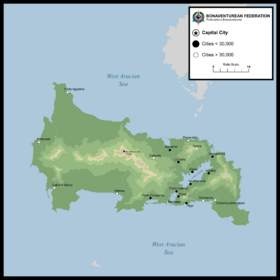 Detailed map of Bonaventure | |
| Capital and | Sermoni |
| Official languages | Vespasian |
| Recognised regional languages | |
| Ethnic groups (2020) |
|
| Demonym(s) | Bonaventurean |
| Government | Federative presidential republic |
• President | Vinicio Nardiello |
• Vice President | Liberio Ceci |
• President of National Assembly | Euseo Di Marino |
| Legislature | National Assembly |
| Formation | |
| Area | |
• | 40,015.36 km2 (15,450.02 sq mi) |
| Population | |
• 2020 estimate | 3,299,035 |
• Density | 82.44/km2 (213.5/sq mi) |
| GDP (PPP) | 2020 estimate |
• Total | $50,378,555,599 |
• Per capita | $15,271 |
| GDP (nominal) | 2020 estimate |
• Total | $26,368,659,217 |
• Per capita | $7,993 |
| HDI (2020) | 0.796 high |
| Currency | Arucian shilling (ſ) (ARS) |
| Date format | dd-mm-yyyy |
| Driving side | right |
| Calling code | +5 |
| ISO 3166 code | BON |
| Internet TLD | .bv |
Bonaventure (Vespasian: Bonaventura), also known as the Bonaventurean Federation (Vespasian: Federazione Bonaventurana) is a sovereign island nation located in the West Arucian sea, in between the continents of Asteria Superior and Asteria Inferior. Bonaventure has maritime borders with Ardesia to the north, Aucuria to the southeast, Eldmark to the west, and Imagua and the Assimas to the south, with whom Bonaventure has a territory dispute over the small Dunhelm Island. As of 2020, Bonaventure has a population of 3,3 million people, and a land area of 40,015.36 square kilometers, being the second biggest and second most populated of the Arucian islands. The capital and biggest city of Bonaventure is the city of Sermoni, located in the .?.?.? bay, in the southern coast of the island.
The island has been populated by the Natí people since 200 BCE and experience an increase in their population during 9th century CE. During the same time, the Zapoyan Empire landed in Bonaventure's northern coast, and quickly established the land as an important location for the seafare commerce in the Arucian Sea. While the Zapoyan influence in Bonaventure grew exponentially, many other Arucian people such as the Natí and the Marai could be found in the island, given it was the Zapoyan's main commercial point within the Arucian Sea. The island remained under the control of the Zapoyans until Assim Asteris and his expedition first harboured in Bonaventure. The Etrurian occupation of the Assimas Island also drove their attention to the Bonaventure. The first Etrurian settlement in Bonaventure was established in 1523, and the Insular War of 1536, led by Giacomo Borghese, put and end on the Zapoyan rule of the island and settled Bonaventure as the Etrurian colony of New Accadia.
New Accadia remained a colony until October 6th, 1946, when Etruria's defeat in the Solarian War put an end to their colonial empire. Eleven days following its independence, New Accadia was acquired and taken as part of the United Provinces of the Western Arucian Islands. The United Provinces remained united until the departure of Imagua and the Assimas, in 1948, and it dissoluted permanently in 1954, with the departure of Sainte-Chloé and Carucere after a constitutional crisis within the Union. New Accadia carried on the name of United Provinces for about 1 year and 3 months after its independence, when a popular referendum voted that the newly sovereign island would be named after the independence war hero, Quarto Bonaventura.
Bonaventure is a volcanic island that lays on the Arucian faultline, a divergent plate boundry between the .?.?.? and the .?.?.? plates. Such conditions have resulted in the formation of the Iacattuotili Valley, alongside the formation of Lake Attila, the biggest and deepest lake in the Arucian island. This geographic placement, however, has affected Bonaventure with many natural disasters including the 1804 Sermoni earthquake, and the 2020 Mount Micchiano eruption.
Bonaventure has the second biggest nominal GDP amongst the Arucian Nations at $26,3 billion, but the second lowest nominal GDP per capita at $7.993. The nation has experience in the service sector, with emphasis in the tourism and financial services. Bonaventure has been attractive to international investors due to its liberal economy and area size, however the 2020 Mount Micchiano eruption caused a tremendous shock to the national economy, and Bonaventure has been in an extensive economic crisis since then. Bonaventure is a member of the Community of Nations, the Organization of Asterian Nations, and co-founder of the Arucian Cooperation Organization.
Etymology
Bonaventure has gone through some name changes throughout the years prior to its current one. For instance, the first record of a name for the island was Chalma. According to linguists, the name is a reference to the Zapoyan term “Chalmecacihuatl,” which translated to the “Women from Chalmeca,” a Zapoyan deity who was worshiped by merchants as the sister of the merchant god, Yacateuctli, and also as the the goddess of “water and earth.” Following the fall of the Zapoyan Empire and the Etrurian conquest in 1536 saw the island being renamed to “New Accadia,” as a celebration to the several families natural from the Etrurian city of Accadia that arrived in the city of Sermoni in January 1538 to permanently populate the location. The colony would keep its name until October 17th, 1946, when the newley independent nation joined the United Provinces of the West Arucian Islands. The name was a reference to all of the Western Arucian islands that united to establish of the United Provinces.
The current name was a suggestion made by Ireneo Zaccaria, a former history professor in the Sermoni University, when the national government opened a contest to select three names for a referendum to change the name of the Island following the dissolution of the United Provinces in 1954. Amongst the over 100 names submitted, Bonaventura, alongside Nuova Cialma and Azzalia were the selected finalists. Ultimately, the name “Bonaventura” was the most voted and it was officially put into effect in January 1st, 1956. According to Professor Zaccaria, the reason for suggesting the name “Bonaventura” was a way to honor the image and doings of Quarto Bonaventura, a man seen by the people of the island as a war hero, a martyr, a liberator of Bonaventura during the Independence Wars, as well as the first President of Bonaventure. The Professor also explained that the name also has a linguistic meaning “land of good fortune,” as bona seems to be a variant of the Vespasian buona (good), and ventura seems to be a variant of the Vespasian fortuna (luck, good fortune). The Professor also added that the name “Bonaventura” is a reference to the Ship Bonaventura, one of the very first Etrurian expeditions to the island led by captain Benvenuto Viscuso, natural from the small Etrurian city of Paci, who’s patron saint is the catholic Saint Bonaventura. According to Zaccaria, "The history of this country is seen to be intertwined with this name, from pre-colonial times up to our modern history."
History
Pre-Euclean Era
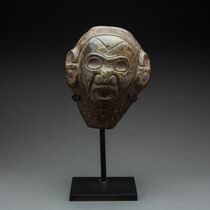
Though scarce evidence of ancient life has been found on the island of Bonaventure, it is known to historians that the Natí people are the first civilization to settle in the land. The oldest evidence of Natí presence in Bonaventure dates back to 200 BCE, and is an artifact recovered in an archeological site near the village of Padula (Bonaventure), State of Rittona. However, the oldest inhabited settlement in Bonaventure is the city of Ixuappano, in the State of Iaitappia, dating back to between 100 BCE and 90 BCE. It is agreed upon that the Zapoyan migration down to Bonaventure, allied with fit weather for agriculture allowed the rapid settlement along the northern coast of the island. In addition to it, Marai people have also been registered to inhabit Bonaventure as early as the 2nd Century CE, in the Bassa Peninsula.
The three people coexisted fairly peacefully, as a lot of economical advantages were seen to emerge out of allying with one another. The center of pre-colonial Bonaventure was the Iacattuotili Valley, the center of the island. The usage of lake Attila was vital for the commerce on the island, as it served as a passway from the southern coast onto the northern coast, connecting the Arucian islands to modern day Ardesia. By the end of the 13th century, the Omatosciacappanno Canal was built connecting the XXXX river to the XXXX river. The canal is approximately 32,6 kilometers long, and it fomented the growth of the city of Omatoyac (modern day city of La Valla), the later Zapoyan capital in Bonaventure. By the 14th century, the Zapoyans in Bonaventure decided to declare an independent kingdom that, though not part of the mainland empire, worked as a close economical ally to the Zapoyan Empire.
The Zapoyan Empire

The Zapoyan presence was permanently consolidated in Bonaventure by the beginning of the 14th century, as the Zapoyan Kingdom of Chalma was established. Unlike most of the loose Zapoyan confederations in the mainland, Chalma remained loyal to the crown until the Etrurian colonization commenced. The island's importance position in the Arucian sea worked as a perfect gateway of commerce into the mainland, benefiting both Chalma and Tzapotla. King Zuma I of Chalma was the first crowned king of Chalma, and he promoted what came to be known as the Chalman cooperation. Basically, the Chalman cooperation promoted the adhesion of Natí and Marai people into government and economical roles, granted that they would all benefit somehow out of the commerce profits. Both Natí and Marai people were dominant in the southern coast of the island, while the Zapoyans remained strong on the northern coast.
The success of the Chalman cooperation provided the island with a long lasting peace that was brought to an end when the Etrurian colonization attempted to decentralize the Chalman kingdom. The Etrurians sided the Natí people at first, and encoureged them to claim their independence from the Zapoyans, which led to a series of clashes between the two people. King Xipil II of Chalma also responded with violence, which led to the beginning of the Insular war, in June 1535. Giacomo Borghese, Etrurian general and colonizer, assisted the Natí with weapons and military strategies, that allowed the war to end quickly by August 18th, 1536, with the complete siege of Omatoyac, and the assassnation of the Zapoyan king. The empire collapsed and it allowed the Etrurians to officially colonize the island then. Most of the Zapoyan war prisioners were enslaved or imprisoned by the colonizers, while the ones who escaped hid away in the jungles and mountains of the island, organizing small independent societies known as "Calpolli".
Etrurian Colonization
The United Provinces of the Golden Isles
The admission of the newly free nation of New Accadia into the United Provinces of the Golden Isles was fast and almost instant following its independence on October 6th, 1946. Only 11 days past its secession from Etruria, New Accadia became an integral part of the United Provinces, after the Community of Nations determined the transfer of both New Accadia and the Assimas over to the sovereignty of the United Provinces. For the 11 days of independence, Evandro La Barca was elected by a party committee as the President of New Accadia, who would later become the Governor of the Province under the UP. In 1949, La Barca left the local office to become President Pierre Voloix's first Premier. He ruled the national parliament for one year when he returned to being New Accadia's governor until 1954. After the Chloeois Premier Raymond Rivière finished his mandate, Narciso Mastrogiacomo became the third Premier under Voloix, and the second New Accadian to take over the position.
When New Accadia was admitted into the union, the nation was granted 14 seats in the Chamber of Commons, only less than Sainte-Chloé. Though the representativeness of New Accadia was extensive within the political ground of the Union, the rise of a nationalistic opposition, led by the newly formed All People's Nation Party (PNT), put New Accadia as a constant headache to the current governmental coalitions. Though the New Accadian Premiers were all elected by the Republican Alliance of New Accadia (AR), most of the Chamber seats belonged to PNT members. Notably, Quarto Bonaventura, Giancarlo Riga, Erico Pezzella, and Ivano Colleta were amongst the leaders of the PNT in the Chamber of Commons.
The rise of the New Accadian nationalism was marked as one of the main events of the Arucian Naissance. During this time, leaders of the PNT, specifically Quarto Bonaventura, became looked up at after the people, as they preached for a nation away from Etruria, and away from the Gaullicaphones of the Arucian. The colors of the New Accadian revolution started to rise again, and the people of New Accadia started to protest against the current government and demand independence. Notably, the 1953 First March for Independence, as well as the 1954 Protests in favor of the constitutional reform were events strongly led by the PNT, and supported by the people. Quarto Bonaventura promoted a series of civil disobedience toward the policies of the UP, and started to plot up a coup d'etat to take over the island from the pro-voloix government. Due to these series of events, Quarto Bonaventura rose as an image of freedom and liberation of New Accadia, and became the face of the New Accadian revolts.
By 1954, Sainte-Chloé had voted to secede from the UP, following a massive constitutional crisis that took over the national government. Like that, New Accadia came to be officially the last nation called "the United Provinces." Voloix remained in power, and most of the Gaullicophone and Estmerophone politicians that supported him were granted the right to live and exercise politics in New Accadia. Voloix's main goal was to live the legacy of the United Provinces, which diverged from the will of the local people, who yearned for a nation of their own. Pierre Voloix remained in power for the rest of the year 1954 and for the majority of 1955. As the people of New Accadia started to demonstrate discontent with Voloix and his resistance to letting go of the United Provinces' identity, the current president proved to be rather stern and resistant to the adoption of a new national identity. The internal pressure over Voloix, summed with the lack of identification between the Chloeois president and the newly independent New Accadia caused him to resign as the Head of State and Government on April 3rd, 1955, and return to Sainte-Chloé. Most of the repatriated politicians that remained in New Accadia post-United Provinces were also forced to return to their original homes, with the exception of Camille Leon, and Yves Thomas, two Chloeois politicians who were highly approved by the Bonaventurean people and were able to remain in the country, acquiring, eventually, the Bonaventurean citizenship.
Independence and Modern Era
Following Voloix's resignation, Narciso Mastrogiacomo, former United Provinces Premier, took over the presidential chair and led the constitutional reform that would be eventually approved by the National Assembly on February 3rd, 1956. The main changes following the new constitution were the change of the official name of the country from the "United Provinces of the Golden Isles" into the "Bonaventurean Federation", as well as the adoption of new national symbols, and the reorganization of its administrative divisions into federative states as opposed to unitary provinces. The new constitution also set direct elections every four years, with the first ever being held on October 14, 1956. By the end national presidential election in the history of Bonaventure, Quarto Bonaventura was elected as the first democratic President of the nation. Unfortunately, President Bonaventura suffered from a severe brain tumor that led to a fatal stroke only one month after taking over the presidency. By protocol, Giancarlo Riga, then Bonaventura's Vice President, ruled the nation until the end of his mandate on October 13th, 1960. While the opposition put up a good fight in the 1960 election, Riga was elected as the second President of Bonaventure, following his good job for the past three years. By the 1964 presidential election, Bonaventure, alongside all of the other Arucian nations, plumbed down in an economic crisis resulting from the 1964 Sugar Crash. The newly reelected President Riga suffered tremendously to keep the national economy steady during the crisis, and his approval index fell exponentially.
By the next election in 1968, PNT decided to put a different candidate, and to present more radical ideas to settle the growing levels of poverty originated from the Sugar Crash of 1964. Romeo Calicchio and the PNT were elected, as he became the third Bonaventurean president on October 14th, 1968, and helped lift Bonaventure out of the mud economically. His land reforms, land distribution, and reinvestment into new crops allowed Bonaventure to dig itself out of the sugar dependency and allow more crops to be planted on the island. Crops such as cotton, tobacco, and rice became greatly cultivated on the various farms of the island. By the next election, Calicchio is reelected to run Bonaventure until 1976. Though sugar prices crashed again in the late 1970s, Bonaventure could support itself much more effectively, given its new exports and better usage of national funds by the government. During that time, many state companies came to be, as the government made itself involved in the people's affairs. So many services came to be provided for all, as well as land being redistributed and an economic rise in the value of the local agriculture caused the PNT to be elected again in 1976, with Giuseppe Di Paolo, in 1980, Giulio Senne, and in 1984, with Ireneo Pignato.
By the 1980s, the other Asterian nations were moving towards industrialization, while Bonaventure remained largely agrarian. The AR opposed fiercely the populism exercised by President Pignato and the PNT. Indeed, the lack of protection of the private sector and the clear favor of the government investments in agriculture led to a decrease of trust between private investors and Bonaventure. While agrarianism favored the working farming class of Bonaventure, the lack of development in other sectors of the economy resulted in the Bonaventurean Economical Slide. The Slide was a period of ten years between 1984 and 1994 where the Bonaventurean GDP received, national and international debt increased, and foreign investment in the island also decreased. By this time, the unemployment rate in Bonaventure rated 15,8%, the second all-time national record.
When the 1988 election came around, the AR advocated strongly in favor of the adhesion of Bonaventure into the Arucian Cooperation Organization, as well as the adoption of the Arucian shilling as the new currency. Mariano Lamendola, 1988 Presidential AR candidate, was the first right-wing candidate elected in the history of independent Bonaventture, and promptly signed the country into the newly created cooperation alliance of the West Arucian sea. The adoption of the Shilling also served to adjust the growing inflation, and more money was produced to encourage out loans and to spin the economy. While the PNT returned to power in 1992 with the election of Ponziano Mione, most of the former government's economic measures were kept.
In 1993, however, a corruption scandal outbroke in Bonaventure. Initially, members of the PNT were found guilty of bribing and money laundering, including the incumbent president and vice president, as well as two other former presidents. The scandal consisted of the governing presidents paying a monthly allowance to members of the National Assembly to buy their support when approving legislation and policies. By the beginning of 1994, President Mione, and his Vice President, Ventura Bernardino, were impeached from their roles in the government. Though the National Assembly was also under a stern investigation, the Assembly President and current temporary President, Giacomo Jacaruso, ruled the banishment of both parties of Bonaventure, and encouraged the establishment of new ones. By May of 1994, the National Assembly approved the Clean-Background Law; the Clean-Background Law makes it legally obligatory for politicians to run a background check, as well as provide the checking bodies with tax returns, and proof of income, amongst other documents. The intent of the law was to professionalize politics in Bonaventure, as well as bring financial transparency to the political process to avoid new massive corruption scandals. The suspension of the PNT and the AR, both deeply affected by the investigations, led to a decentralization of the political parties in Bonaventure. While the AR ceased to exist, the PNT merged with the Union of the Society of Workers (USL) to form a new liberal party called the United Nation's Party (PNU). Besides the PNU, other nine political parties emerged in the course of 6 years, in what became known as the Mass Surgency of Parties of Bonaventure.
By the 1996 election, many other parties had the chance to run for the presidency, which brought new points of view to the population, and refreshed the political air of the country. The second round of the 1996 elections was disputed between Otello Tortorice, PNU, and Pellegrino Di Donna, from the Social Democratic Party (PSD). Di Donna won the election by a close margin and ruled the country for one full term. Since then, Bonaventure has been through a period of political stability and cooperation between the executive and the legislative powers. The current president is Vinicio Nardiello, who has been having the tough task of leading Bonaventure forward past the Eruption of Mount Micchiano, in September 2020.
Geography
Lake Attila, the biggest lake in the Arucian Sea.
Mount Micchiano, the tallest point in the Arucian Sea.
The XXXX Falls, Nuova Croscia.
Faro degli Annegati Beach, Federal district.
Climate
Biodiversity
Demographics

| Historical population | ||
|---|---|---|
| Year | Pop. | ±% |
| 1765 | 44,883 | — |
| 1775 | 70,250 | +56.5% |
| 1800 | 155,426 | +121.2% |
| 1815 | 220,892 | +42.1% |
| 1832 | 350,051 | +58.5% |
| 1846 | 447,914 | +28.0% |
| 1860 | 583,308 | +30.2% |
| 1877 | 731,648 | +25.4% |
| 1887 | 798,565 | +9.1% |
| 1899 | 953,243 | +19.4% |
| 1910 | 1,118,012 | +17.3% |
| 1920 | 1,299,809 | +16.3% |
| 1930 | 1,543,913 | +18.8% |
| 1940 | 1,869,255 | +21.1% |
| 1950 | 2,210,703 | +18.3% |
| 1960 | 2,349,544 | +6.3% |
| 1970 | 2,712,033 | +15.4% |
| 1980 | 3,196,520 | +17.9% |
| 1990 | 3,522,037 | +10.2% |
| 2000 | 3,808,610 | +8.1% |
| 2010 | 3,725,789 | −2.2% |
| 2020 | 3,299,035 | −11.5% |
The population of Bonaventure, according to the 2020 census made by the Bonaventurean Institute of Geography and Statistics (IBGS), was 3,299,035 habitants (82.4 per square kilometer), with a proportion between men and women as 0.86:1 and over 80% of the population living in the cities. The population is strongly located in the southern region (Rivermouth region), home to over 2 million people, accounting for about 62% of the country's total population. The biggest urban areas of Bonaventure, according to the estimative made by IBGS as of 2020, are the metropolitan areas of the national capital Sermoni (857,732), Fava (392,663), Appano (184,651), Porto Gamba (167,045), and Riga (163,222).
Though Bonaventure is a country of emigration tendencies, immigration has played an important part in the nation’s current demographic makeover. Waves of Vespasians, Carinthians, and Novalians in the 19th century, as well as Carinthians and Novalians again in the 20th century, are amongst the biggest Euclean descendant populations in Bonaventure. In terms of other Asterian people moving into Bonaventure, Ardesia has been a historical point of departure to Bonaventure. For instance, the Zapoyan colonies of the 9th century were the first wave of Ardesian immigration into the island, followed by another mass Ardesian immigration wave between the 1940s and the 1960s. Despite that, Bonaventure has been an emigration country, meaning that it loses more population than it gets. For instance, the current immigration rate of Bonaventure is -1.01 migrant(s) per 1,000 inhabitants. Most of this diaspora is due to better life conditions in neighboring countries, specially in Asteria Superior.
The Bonaventurean population had a significant growth throughout the 20th century, with a significant deacceleration and decrease of population in the 2000s, 2010s, and 2020s. The low birth rate alongside the growing Bonaventurean diaspora has resulted in a recurring negative population growth since the beginning of the 21st century. Nowadays, the birth rate of Bonaventure is 7.5/1,000, amongst the lowest in the world. The life expectancy is of 78,28 years; the expected years of education for Bonaventure is 13.3 years, while the mean years of education is of 11 years; the GDP PPP per capita of Bonaventure is of approximately $15.3 thousands. The Bonaventurean HDI is 0.791, considered high and ranking as the second best in the West Arucian region.
Ethnicities
The island was first inhabited by the Natí people at around the 9th century CE. The Natí people were located mostly on the southwest plains of the Bonaventurean island. The Marai peoples were also seen to immigrate into Bonaventure, but in less numbers than the Natí. The Marai people concentrated their settlements in the southeast in the Bassa Peninsula. The Zapoyan people, on the other hand, migrated down from Ardesia into Bonaventure, and occupied all of of the Northern coast, as well as the west coast, and the Iacattuotili Valley. The establishment of the Zapoyan Empire in Bonaventure, and the promotion of the island as a commercial hub in the region, the Native Asterians coexisted fairly peacefully.
The arrival of the Eucleans in Bonaventure during the 16th century saw the introduction of White Euclean people in the current demographic layover of Bonaventure. Mostly concentrating their settlements in the southern and eastern coast, the Eucleans were rapid to rule out the native dominion of the land. This led to many native people being killed, dying of because of new diseases, or being enslaved. The Eucleans also introduced Black Bahians into the scene, as Bonaventure became an important point of commerce during the Transvehemens slave trade.
As the Euclean and Bahian populations grew, and the Native Asterians decreased, the birth of a Mixed race (Razza mista) came to be as all three major ethnicities started to coexist and reproduce. Nowadays, the Mixed ethnicity accounts for 37.6% of Bonaventure’s population, the biggest ethnic group in the island. Additionally, the White people account for 27.4%, followed closely by Black Bahians or Bahio-Ventureans at 26.3%, and Native Asterians, most of which are of Zapoyan origins, at 6.2%. Approximately 1.4% of the population is unspecified, while 1.1% are other ethnicities, more often Southern Coians including Senrians and Shangeans.
Religion
Languages

The official language of the Bonaventurean Federation is Vespasian. All government, media, and education are performed in Vespasian. Around 99,4% of the Bonaventure population speaks Venturean Vespasian as their first language. The variation of Venturean Vespasian can be seen between regions, with accents being easily identifiable. For instance, the most widely spread accent in Bonaventure is the Metropolitan accent, spoken in the Rivermouth region. Other widely spread accents in Bonaventure include the Lake accent, spoken by the Lake States population, the Fino accent, spoken mainly in the State of Santa Fina, the Croscian accent, spoken by inhabitants of Nuova Croscia, the Southeast accent, spoken by people from Bociba, Rittona, and Trinità, and the Bassano accent, spoken by the people of Spirito Santo state.
In terms of other national languages, Souther Zapoyan is the most widespread one, with approximately 213 thousand native speakers, mostly concentrated in the Lake Valley region. The Natí language is still sparsely spoken by a few hundreds of people in the Southwest region, most of who live in the countryside of their respective states.
Astapasian is widely spoken in the State of Santa Fina, where about 16 thousand people speak it as their native tongue. The Astapasian language developed in the region after masses of Ardesian people migrated to the flatlands of the northwest of Bonaventure, and settled in the region. The city of San Agostino is where the most amount of Astapasian speakers live, but the city of Clemenza di Sant'antonio is considered the cultural center of the Astapasian people.
Cartesian is another language that holds a status of a regional language, being spoken mainly in the State of Nuova Croscia. The waves of Carinthian and Novalian immigrants settled in the west coast of Bonaventure and brought the language to the region. Nowadays, Cartesian is spoken by about 11 thousand people natively, almost all located in Nuova Corsica. The city of Portovest is the cultural haven of the Cartesian language, as well as where the majority of its speakers are located.
Government & Politics
Armed forces
Crime and law enforcement
International relations
Sub-divisions
States
With the permanent dissolution of the United Provinces of the Golden Isles, and the Constitutional reform of 1956, Bonaventure became a federative republic, thus being subdivided into states as opposed to provinces. The first arrangement of the states in 1956 resulted in the creation of 15 states. In 1959, due to the increasing amount of population, political relevancy, and economic importance of the region, the Federal District was created by partitioning some municipalities belonging to the states of San Giorgio and Missioni, and assigning it under the city of Teravigo, the administrative center of the District, while the Federal Government is established in the city of Sermoni. The remaining four states were former national territories, but they were recently granted statehood due to their population passing 20,000 people; the order of admission is: Rittona in 1982, Spirito Santo in 1988, Mizzia in 1994, and Ximantuatti in 2000, becoming the 20th and the newest state in Bonaventure.
Cities and Municipalities
| Rank | State | Pop. | |||||||
|---|---|---|---|---|---|---|---|---|---|
 Sermoni  Fava |
1 | Sermoni | Federal District | 857,732 |  Appano  Porto Gamba | ||||
| 2 | Fava | Missioni | 392,663 | ||||||
| 3 | Appano | Poveromo | 184,651 | ||||||
| 4 | Porto Gamba | Santa Croce | 167,045 | ||||||
| 5 | Riga | San Giorgio | 163,222 | ||||||
| 6 | Accapucchi | Montecalvo | 132,029 | ||||||
| 7 | La Valla | Setinattia | 109,937 | ||||||
| 8 | Iecattia | Conucco | 101,838 | ||||||
| 9 | Quattecchia | San Gaetano | 90,224 | ||||||
| 10 | Sacra | Attila | 67,882 | ||||||
Economy
Tourism
Infrastucture
Education
Health
Energy
Transportation
Media and communication
Culture
Music
Television and Cinema
Sports
Celebrations and Holidays
| Date | Estmerish name | Vespasian name | Day off? | Notes |
|---|---|---|---|---|
| January 1 | New Year’s Day | Capodanno | Marks the first day of the Gregorian calendar year. | |
| January 6 | Epiphany | Epifania | Celebrates the revelation of God incarnate as Jesus Christ. | |
| Feburary 10 | Nation's Day | Giorno della Nazione | Celebrates the Approval of the Constitution of 1956, that put an end to all ties between Bonaventure and the United Provinces of the Golden Isles. | |
| variable | Ash Wednesday | Mercoledì delle Ceneri | Marks the beginning of Lent. | |
| variable | Good Friday | Venerdì Santo | Commemorates the crucifixion of Jesus Soter. | |
| variable | Easter | Domenica di Pasqua | Celebrates the resurrection of Jesus Soter. | |
| May 1 | Labor Day | Festa dei lavoratori | Celebrates the international labor movement and the Bonaventurean working class. | |
| variable | Pentecost | Lunedì di Pentecoste | Celebrates the descent of the Holy Spirit upon the Apostles. | |
| August 15 | Assumption | Assunzione di Maria | Celebrates the ascension of the Virgin Mary to Heaven. | |
| August 18 | All Peoples Day | Giornata di Tutti | Initially known as the Discovery Day (giorno della scoperta), or Borghese's Day (giorno di gorghese), the day celebrated the discovery of Bonaventure by the Etrurians, as well as the colonization of the island. The holiday has been recently changed to the All Peoples Day as a celebration to the pre-colonial people that already lived in the isle, alongside the Euclean settlers that later inhabited the nation and formed the Bonaventurean people as known today. | |
| October 6 | Independence Day | Giorno dell'Indipendenza | Celebration of the proclamation of independence of the Colony of New Accadia from Etruria. | |
| November 1 | All Saints' Day | Ognissanti | Commemorates all Sotirian saints, known or unknown. | |
| November 2 | All Souls' Day | Giorno della Morte | Celebration of life and the lives of the deceased. On this day, it is common to salute the souls of the gone with placing offerings (offerete), altars, candles, and flowers. | |
| December 24 | Nativity Eve | Vigilia di Natale | The day preceding Christmas. | |
| December 25 | Nativity | Natale | Celebrates the birth of Jesus Soter. | |
| December 31 | New Year's Eve | Vigilia di Capodanno (Festa di San Silvestro) | The day preceding New Year's Day. |




